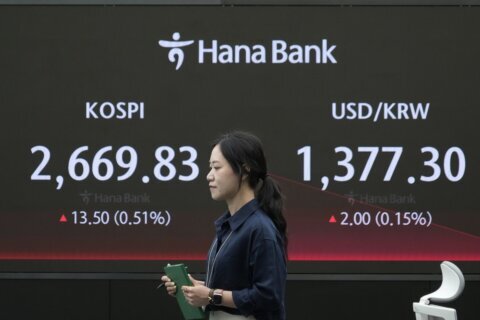MEXICO CITY (AP) — Bruno Plácido, a well-known leader of a civilian “self-defense” group, was shot to death Tuesday in southern Mexico, eliminating one of the last true chiefs of the country’s armed vigiliante movements that sprang up a decade ago.
Vigilante squads in other parts of southern and western Mexico still call themselves “self-defense” groups, but almost all are now infiltrated or funded by drug cartels.
Plácido was slain in the Guerrero state capital, Chilpancingo, said a state official, who was not authorized to be quoted by name. No suspects or motive was immediately announced. Chilpancingo has been the scene of turf battles among warring drug gangs.
Plácido rose to prominence in violence-plagued Guerrero in 2013 when he organized a rag-tag army of farmers to capture suspected gang members. His group held about 50 suspects for weeks in improvised jails, before handing them over to civilian prosecutors.
He organized hundreds of villagers armed with old hunting rifles, ancient pistols and small-bore shotguns to set up armed patrols and roadblocks in the township of Ayutla to defend their communities against crime. They said authorities had failed to bring peace and safety to the impoverished stretch of the Pacific coast east of Acapulco.
“There was a psychosis of fear, of terror,” Plácido said in an interview with The Associated Press in 2013, discussing the frequent killings and extortion demands levied by drug gangs against farmers and ranchers.
Plácido later extended his group’s reach to the mountains inland from the coast, where warring drug gangs like the Ardillos, the Tlacos, the Rojos and Guerreros Unidos have long spread terror.
While Plácido had many enemies, it is not clear who might have killed him.
His death comes just months after the June ambush slaying of vigilante leader Hipólito Mora in the neighboring state of Michoacan. The killings of Plácido and Mora have essentially wiped out all the old guard leaders of the armed “self-defense” movements.
Mora was a main leader of Michoacan’s vigilante movement, in which farmers and ranchers banded together to expel the Knights Templar cartel from the state between 2013 and 2014.
Mora was one of the few fighters to remain in his hometown after the struggle, tending to his lime groves. But he complained in recent years that many of the vigilante forces had been infiltrated by the cartels and that gang violence was worse than ever.
What Plácido was up against in Guerrero was a much more fractured mix of drug cartels, each controlling part of the mountainous state.
Chilpancingo, though it is the state capital, is not immune to the violence.
In July, hundreds of people organized by the Los Ardillos drug gang took over the city’s streets, seeking to force the government to release two detained gang leaders charged with drug and weapons possession.
The demonstrators largely blocked all traffic on the highway between Mexico City and Acapulco for two days and clashed with security forces. Theys also abducted 10 members of the state police and National Guard as well as three state and federal officials and held them hostage for a day.
There are still “community police” forces in Guerrero, but unlike the vigilante groups, they do not have the weapons or other equipment to take on drug cartels.
About 80 villages in the state have organized the legally recognized “community police” forces since 1995, in which poorly armed members detain and prosecute people, generally for minor offenses like drinking or fighting. They have their own jails, “courts” and punishments, which can include forced labor for the village or re-education talks.
Copyright © 2024 The Associated Press. All rights reserved. This material may not be published, broadcast, written or redistributed.






